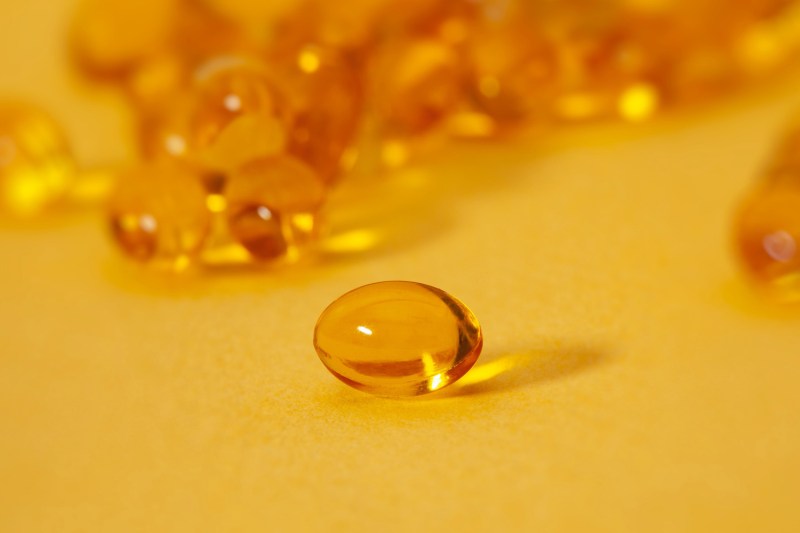Vitamin D is one of the most impactful nutrients that we need to feel our best and to function optimally. As a nutritionist, I am constantly on top of my clients when it comes to making sure they have enough vitamin D in their diet, as it can play a real role in mental health, which influences countless other things.
So, are you curious about how to get vitamin D into your daily routine? Keep reading to learn the best food sources, how to use sunlight and supplements, and more!
What is vitamin D?

Vitamin D is a fat-soluble vitamin essential for bone health, immune function, and overall well-being. It helps the body absorb calcium and phosphorus, promoting strong bones and teeth.
The body produces vitamin D when the skin is exposed to sunlight, earning it the nickname “sunshine vitamin.” It is also found in certain foods like fatty fish, egg yolks, and fortified products, as well as supplements.
Vitamin D supports muscle function, reduces inflammation, and plays a role in preventing chronic diseases. Deficiency can lead to weakened bones, frequent infections, and fatigue, so making sure you maintain adequate levels is vital for long-term health and vitality.
What are the benefits of vitamin D?

Supports bone health
Vitamin D is crucial for maintaining strong and healthy bones. It also helps the body absorb nutrients like phosphorus and calcium, which are essential minerals for bone formation. Without sufficient vitamin D, bones can become brittle, thin, or misshapen, increasing the risk of osteoporosis in adults and rickets in children.
Strengthens the immune system
Vitamin D plays a vital role in supporting the immune system. It enhances the body’s ability to fight off infections by activating immune cells. Studies have shown that adequate vitamin D levels can reduce the risk of respiratory infections, including the flu and colds. For example, one clinical trial involving postmenopausal women “found that supplementation with 2000 IU/d resulted in significantly fewer upper respiratory tract infections, including influenza, than a placebo or supplementation with 800 IU/d.”
Enhances mood and mental health
Vitamin D levels can have a significant impact on mental health and mood regulation. Low levels of vitamin D are linked to depression, seasonal affective disorder (SAD), and anxiety.
By maintaining healthy quantities in the body, vitamin D may improve mood, reduce symptoms of depression, and support overall brain health. It also helps regulate neurotransmitters like serotonin, which influence emotional well-being.
What foods are high in vitamin D?

Several foods are naturally high in vitamin D or fortified to help meet daily needs. Consider including the following in your diet regularly to maintain an adequate intake.
Fatty fish
Fatty fish like salmon, mackerel, tuna, and sardines are among the best natural sources of vitamin D. Just one serving of salmon can provide over half the recommended daily intake.
Egg yolks
Egg yolks contain a modest amount of vitamin D, making them an excellent addition to your diet, especially for breakfast.
Fortified foods
Many foods are fortified with vitamin D to help individuals meet their daily requirements. Common options include cow’s milk, plant-based milk (such as almond or soy milk), orange juice, and breakfast cereals.
Mushrooms
Some mushrooms, like maitake and shiitake, naturally contain vitamin D, especially if exposed to ultraviolet light during growth.
Can you get enough vitamin D from sunlight?

Yes, you can get enough vitamin D from sunlight, but it depends on factors like location, time of year, skin type, and sun exposure. The body produces vitamin D when the skin is exposed to UVB rays. Try to spend 15 to 30 minutes in direct sunlight a few times a week with exposed skin to support your vitamin D levels.
Even if you’re able to get in the sun often enough, people in areas with limited sunlight during winter months or those with darker skin may still struggle to produce enough of the nutrient. Excessive sunscreen use or staying indoors also reduces vitamin D synthesis.
When to consider supplementing vitamin D

Consider supplementing vitamin D if you have limited sun exposure, live in a region with long winters, or spend most of your time indoors. People with darker skin, older adults, or those who consistently use sunscreen may also produce less vitamin D naturally. Certain medical conditions, like malabsorption disorders (e.g., celiac disease or Crohn’s), or a vegan diet can increase the risk of deficiency since vitamin D-rich foods are primarily animal-based foods.
Symptoms such as fatigue, bone pain, or frequent infections may indicate low levels. If you’re concerned, reach out to a healthcare provider, as they can test your levels and recommend an appropriate supplement dosage if needed.
Frequently asked questions

How can I raise my vitamin D level quickly?
To raise vitamin D levels quickly, spend 15 to 30 minutes daily in direct sunlight, exposing your skin without sunscreen. Include vitamin D-rich foods like fatty fish, egg yolks, and fortified products in your diet. A high-dose vitamin D3 supplement, under a healthcare provider’s guidance, can also help improve levels efficiently.
What are the signs of very low vitamin D?
Signs of very low vitamin D include fatigue, bone pain, muscle weakness, or cramps. You may experience frequent infections, slow wound healing, depression, or hair loss. Severe deficiency can cause brittle bones (osteomalacia) in adults and rickets in children. Consult a healthcare provider for testing if you suspect a deficiency.
What food is highest in vitamin D?
Fatty fish, such as salmon, mackerel, and sardines, are the highest natural sources of vitamin D. Cod liver oil is another excellent option. Fortified foods like milk, orange juice, and cereals also provide vitamin D, though in smaller amounts. Include these in your diet to help boost your vitamin D intake.




